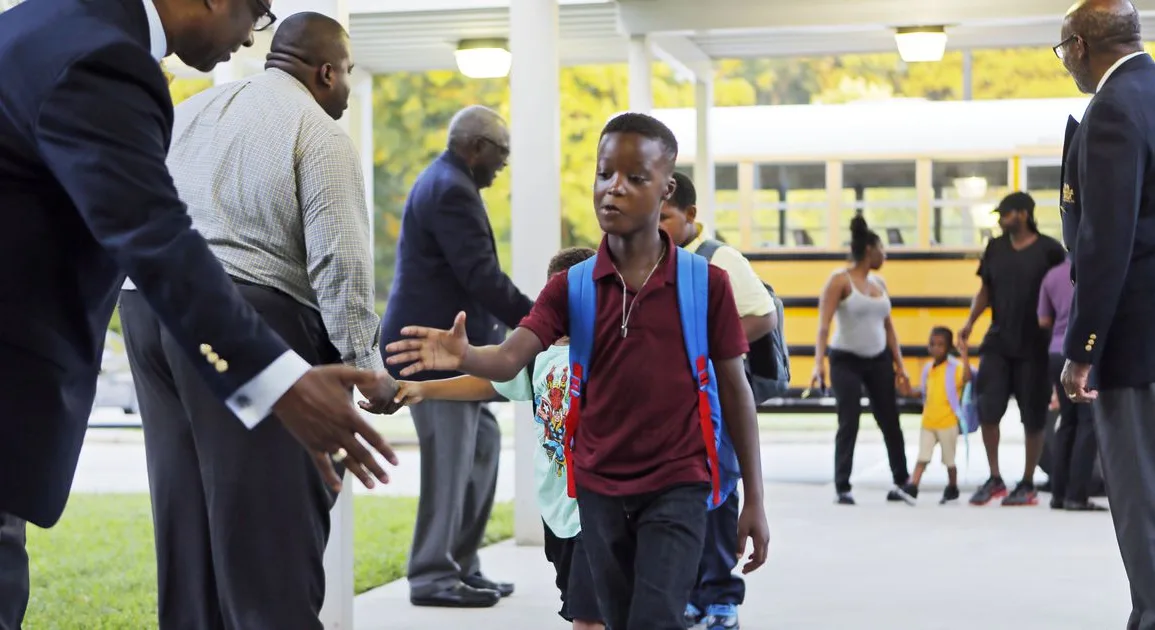
J. Terry Parker worked in Texas public schools for 20 years in a variety of teaching, school counseling and leadership roles and 19 years with the Centers for Disease Control and Prevention’s Division of Adolescent and School Health. While with the CDC, Parker worked with urban school districts across the country.
In a guest column, Parker discusses the urgent need to create school and community programs that speak to Black males. Parker sponsors an endowed scholarship for Black male students at Texas A&M University.
By J. Terry Parker
The realities are stark and have been for generations. Numerous studies have shown that Black boys are more likely to live with a single parent in a disadvantaged neighborhood and attend inadequate schools; be academically retained; be suspended from school; and be less likely to graduate from high school.
Relatedly, the Commission on the Social Status of Black Men and Boys, a bipartisan committee created by Congress in 2020, noted in a report last year that by age 18, 30% of Black boys have been arrested or have had some contact with the juvenile justice system.
Of greatest concern is that homicide is the leading cause of death among young Black males, most often by gun violence at the hands of another Black male. Given this, schools and communities must collaborate to help lessen the social inequities in today’s society. Efforts should seek to support them toward a positive life journey.
Credit: Contributed
Credit: Contributed
Children and schools are inextricably linked. Thus, schools must play an integral part in promoting and supporting the academic success of their Black male students. Schools must strive every day to provide curricula and programs (life skills, social-emotional learning, social justice initiatives, etc.) that are life-relevant and provide ongoing guidance and support to ensure the successful completion of those programs.
Relatedly, research has shown that Black boys and students of color in general perform better academically if their teacher looks like them. School districts across the country should make every effort to recruit, hire and retain highly qualified classroom teachers of color, especially Black males, at all grade levels. Providing incentives for those teachers to remain in the district as well as administrative support is also critical.
Schools must also provide the necessary professional development and resources to ensure that classroom teachers, school counselors, nurses and others have what they need to meet the academic, health and psychological well-being of all students, including Black males.
Schools must also strive to include fathers, regardless of their status within the family. There need to be opportunities, whether at school or within the community, where fathers can meet, network and be empowered to be the most successful parent possible. The goal ought to be providing fathers with information on successful parenting practices and allowing them to role-play their new knowledge and skills before implementing them in the real world.
Schools or community-based organizations can further fathers’ knowledge by providing information and resources from the National Fatherhood Initiative. Among the foreseeable benefits, fathers will gain insights into what it takes to be a positive role model for their sons.
Schools should partner with Black colleges and universities and other Black professionals to establish mentoring relationships for a sustained amount of time. These same adults can also promote the importance of high school graduation and speak to the life benefits of an education beyond high school.
Relatedly, schools must not limit their programs to district sites, but rather engage the community by also offering programs in neighborhoods, community centers and faith-based entities. These partnerships bode well for school-community relationships and broaden the number of venues for intervention opportunities.
A few examples come to mind. The Strong African American Families program at the University of Georgia has been researched extensively, and positive outcomes were shown for multiple risk areas. There are programs for youths ages 10 to 14 and their families. This program has been adopted across the country and implemented in schools, juvenile justice facilities, behavioral health organizations and others.
The Becoming a Man program for economically disadvantaged youths is another noteworthy intervention. Research has shown that it significantly increased high school graduation rates and decreased crime-related outcomes. It, too, has been adopted nationally.
Another well-known community-based youth development program is 100 Black Men of America. Their work is accomplished through mentoring, education, health and wellness and economic empowerment. These men would serve boys well by also engaging them in conversations that redirect the influence of toxic masculinity that so many Black boys and young men conform to as a way of life on the streets.
Given the extent of the problem, schools and communities must come together collectively to address these issues. They must be proactive, forward thinking to identify and implement programs and strategies that have promise or that have been proven successful in other cities. These programs should be implemented early in the lives of Black boys and sustained through at least high school graduation.
Moreover, these programs should provide for ongoing conversations by trusted adult role models that promote the boys’ potential beyond life on the streets, as well as discourage the lure of criminal or gang activity and the not-so-realistic goal of playing professional sports. They need to know that they are supported unconditionally with the goal of a productive life experience going forward.



